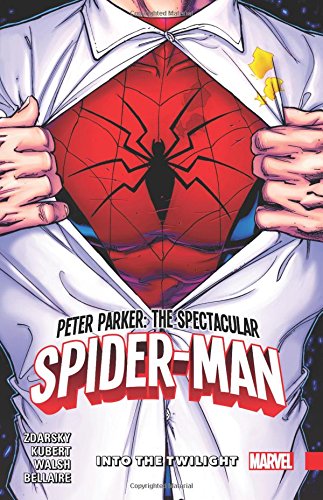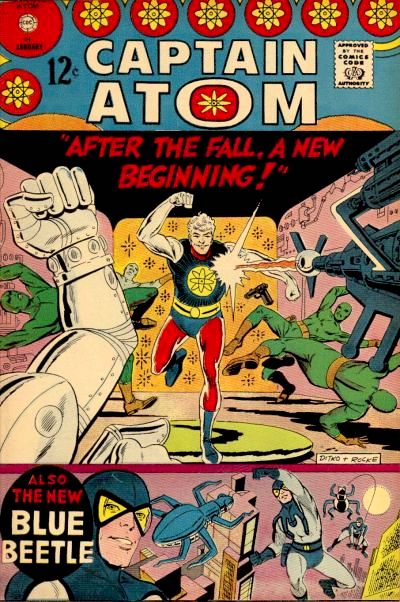See if you can guess which animated series, they're talking about...
Order from Trunk Records.
Details:
Way back in 1967, an animated superhero cartoon was released into the
world. It was created by Grantray-Lawrence Animation and was based on a
web-spinning, crime fighting blue and red character originated in 1962,
in Marvel Comics by Stan Lee and Steve Ditko. This amazing series (that
we’re not allowed to mention the name of for legal reasons) ran on ABC
TV in the USA, then Canada, then a few years later started to spread its
web further, running here in the UK throughout summer holidays, after
school and possibly early mornings at weekends in the late 1970s. The
series then got released on VHS video (and probably Betamax too) in the
mid 1980s and still continues to spin its animated magic around the
world through further broadcasts, YouTube and DVDs.
The series was notoriously low budget, with animated errors
everywhere and numerous scenes, sequences and backgrounds being re-used
all the time, often across the same episode. Even a certain spider logo
on a costume would appear with six legs, then eight legs later on, then
back to six again in the same show.
Series One opened with a newly written spider theme, a classic, hooky
song all about doing whatever spiders can, and had, as Big George (RIP)
once pointed out to me, a set of session singers falling slightly out
of time with the backing track after the first verse. Series One also
featured background music by jobbing composers Bob Harris and Ray Ellis
but these cues and master tapes are now believed to be lost.
After Series One the company Grantray-Lawrence went bankrupt, so the
amazing spider series (that we’re not allowed to mention for legal
reasons) was taken on by producer Steve Krantz. He brought in new
talent, including animation director Ralph Bakshi who later went on to
turn a Robert Crumb strip cartoon into the feature Fritz The Cat. Krantz
also slashed the already cripplingly small spider budget, and brought
in the idea of using economic library music. Here, thanks possibly to an
independent sync agent (it has been suggested that a company called
Music Sound Track Services may have been the one) production turned to
the KPM catalogue. This was one of the few really established library
catalogues around at the time with a modern edge; it was full of
fabulous, modern dramatic music tracks – often all on the same LP. But
more importantly all the tracks were far longer than the one minute
musical cuts that many of the fledgling USA library companies were
issuing at the time. Not only would this KPM music be efficient,
affordable and very easy to use, it would also mean syndication
worldwide would not be held up by any future musical issues. Krantz
produced two amazing spider series (that we’re not allowed to mention
for legal reasons), and both were smothered with KPM music. In fact
barely a spider second goes by without music playing in either the
background or foreground.
For many years I – and many nostalgic others - have been thinking
about putting this vinyl album together. For many enthusiasts this
really is formative music – a junior foray into hip swinging crime jazz
and esoteric musical grooviness. I remember talking about it with
library music collectors like Joel Martin at least a decade ago. I’ve
also read on line accounts by DJs from WFMU on the trail of original
spider master tapes, and there’s even a whole forum dedicated to
“Spidey-Jazz”. Then recently I was looking at an old spider tracklist
and realized that several of my favourite KPM cues were there including
Syd Dale’s “Hell Raisers” and “Walk And Talk”, both from one of the most
elusive and desirable KPM albums of all time (yes, you just try and
find yourself a copy of KPM 1002 right now), so I decided to push on and
get the album made.
So, what features on this Spider Jazz Lp? Well it’s music from the
amazing TV series we are not allowed to mention for legal reasons, BUT,
not music from Series One. No, but it is all from Series Two and Series
Three. From looking at archival cue sheets, over 50 tracks from various
early KPM 1000 series albums were used across episodes. I’ve distilled
this down into one exciting and enthralling LP, and if this works a
further Spider Jazz album may well swing in to production. If you’re
interested (and I’m sure you may well be) cues here came from KPM1001,
KPM1002, KPM1015, KPM1017, KPM1018 and KPM1043 and were composed by
master library composers from the era – Dale, Hawkshaw, Hawksworth,
Mansfield etc.
And if you are listening over there in the USA, you may well
recognize many of the cues here not just from the amazing TV series
(that we’re not allowed to mention for legal reasons) but also from
classic 1960s and 1970s NFL highlight shows that we are allowed to
mention.
TRACKLISTING
Side One
1. The Hell Raisers - Syd Dale
2. The Eyelash - Johnny Hawksworth
3. Walk In A Nightmare - Syd Dale
4. Beat Street - Johnny Hawksworth
5. Walk And Talk - Syd Dale
6. Big Bass Guitar - Bill Martin / Phil Coulter
7. Mr. Chestertons Dog - Bill Martin / Phil Coulter
8. Mods & Rockers - Bill Martin / Phil Coulter
9. L.S.D. - Bill Martin / Phil Coulter
Side Two
1. Stand By - David Lindup
2. Take A Goosie Gander – Syd Dale
3. Juggernaut - David Lindup
4. Grand Prix - Johnny Pearson
5. Veiled Threat – David Lindup
6. Sixth Sense - David Lindup
7. Funky Flight - Keith Mansfield
8. Raver - Alan Hawkshaw
9. The Washington Affair - Syd Dale









































